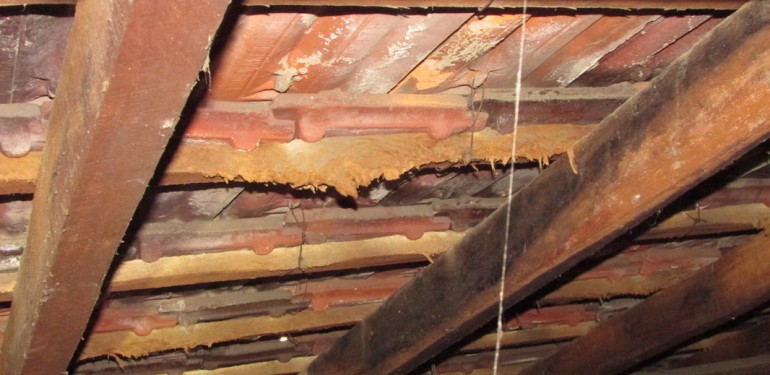
What is Chemical Delignification & is it a Structural Problem?
Lignin is an organic natural ‘glue’ that binds the cells which make up the timber component together. Chemical delignification is when the lignin within the timber is destroyed, as the timber gradually weakens and finally collapses when the timber becomes defibrated. This type of timber deterioration is also commonly referred to as ‘hairy timber’ as the fibres within the timber detach once the lignin is broken down.
Where will I find chemical delignification & is it a structural problem?
Chemical delignification is generally a problem associated with timber roof battens when identified within the roof loft space whilst conducting a pre-purchase building inspection. Although chemical delignification has the potential to affect other timbers within the roof loft space, generally due to the sectional size of the roof battens accompanied with their position within the roof loft space, they are the first to suffer the effects of this chemical reaction. If for instance a timber-framed roof had timber battens & a roof tiled covering, it would be fair to assume that a roof collapse would occur prior to any significant delignification occuring to any structural framing members.
Although chemical delignification has been associated to timbers with poor durability properties such as Douglas fir (Oregon), here in Perth we have witnessed firsthand that chemical delignification can occur to reasonably durable timbers such as Jarrah. Generally speaking Jarrah has an above ground durability rating of 15-40 years, therefore making many homes around Perth susceptible to this risk.
Although chemical delignification takes a number of years before collapse occurs, it will be classified as a major defect whilst conducting a pre-purchase building inspection. Furthermore, it is not recommended to walk on any roof cover when chemical delignification is identified, due to the threat of the roof cover collapsing.
It would also be prudent to consider the cause of the chemical delignification, as the cause may have bearing on the future health of occupants.
What causes chemical delignification?
As suggested by the name of this type of timber deterioration, chemical delignification is caused by some form of airborne attack on the timber. Examples of causes include:
- In areas close to the sea, airborne salts attack the timber. This process may be accelerated for homes with terracotta roof tiles, as any tile fretting will allow further amounts of contaminated moisture into the roof loft space.
- Areas of high pollution, such as homes in close proximity to industrial areas or main roads, airborne pollutants will cause chemical delignification.
- Another cause of chemical delignification is the release of gases into the roof loft space. This may include the escape of gases from appliances such as slow combustion stoves or perforations to ducting from flued gas appliances. Hot water systems located within the roof loft space may also accelerate chemical delignification.
Is chemical delignification preventable / curable?
In many instances drastic measures would have to be taken to prevent chemical delignification from occurring, as the proximity of the property plays a huge part in the timber deterioration occurring (i.e. close to ocean, close to industrial area etc.). For ongoing maintenance & reduction of risk from damage occurring due to airborne chemicals, sealing roof battens with products such as pale boiled linseed oil will generally prolong their life.
An important consideration when purchasing a property in Perth is that that AS 4349.1-2010 Inspection of buildings – Timber pest inspections will not cover chemical delignification. It is therefore imperative to have a building inspection clause in your contract if you are concerned about the threat of chemical delignification to the property you are placing an offer on. At Cap-It-All Building Inspections we will always inspect the roof loft space, subject to reasonable access, so you can confidently proceed with the transaction of securing your new home.
Case Study
The chemical delignification identified to these roof battens were at a property located close to a main road. The identification of this major defect saved our client tens of thousands of dollars in repair work.
